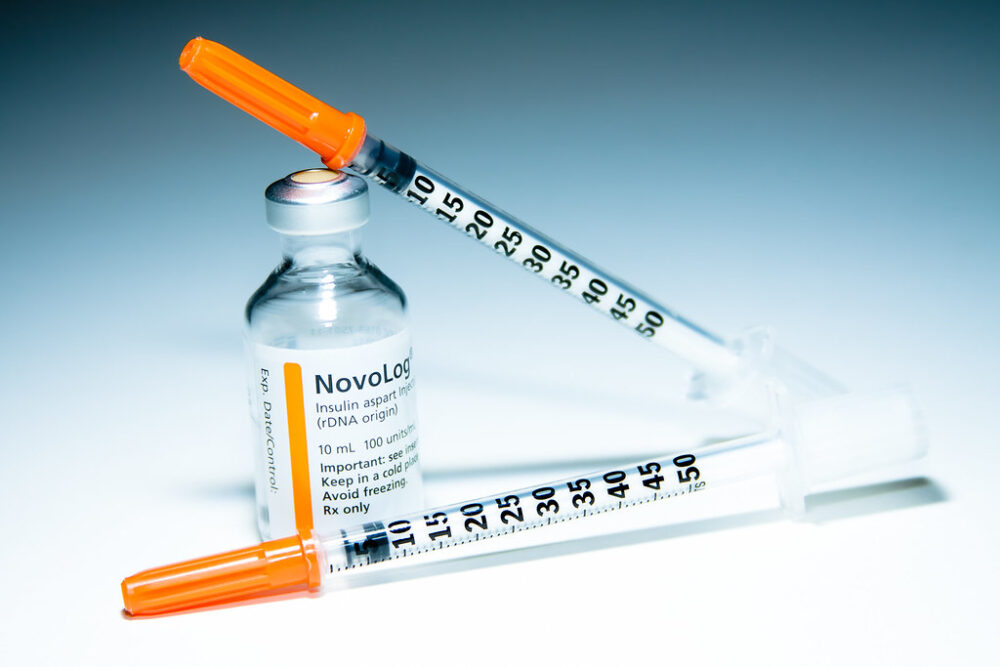Insulin is a necessity. A peptide hormone produced by the pancreas, insulin is important in controlling blood glucose levels as well as carbohydrate, fat, and protein metabolism. In fact, without insulin, glucose can not be stored, and its absence causes fat to be broken down into keto acids, triggering diabetic ketoacidosis, a harmful condition often showing symptoms of rapid deep breathing and a high thirst.
Some people cannot produce enough functional insulin to maintain homeostasis, a condition called insulin-dependent diabetes or Type 1 diabetes. Fortunately, a team of Canadian scientists in the 1920s was able to discover a way to inject pure insulin via a needle into the body so that people with this condition can live well-balanced lifestyles. Aware of the significance of their discovery, the original intent of the scientists was to ensure that the prices of insulin would be affordable. They were able to sell their patent on insulin to the University of Toronto for just one dollar. By selling it to a university, they hoped this would prevent a monopoly from building a high-priced marketplace for their discovery.
But, in the United States today, this is far from the truth. Though the discovery of insulin was relatively straightforward, the price for this essential hormone has had a long and complicated journey. In 1995, the price for a vial of insulin was $25. But today, the same vial can cost more than $300. Even though the cost of production is relatively low at around $10, only in the United States has the price of insulin been on the rise in the past three decades.
In 1995, the price for a vial of insulin was $25. But today, the same vial can cost more than $300
The high prices have largely been due to pharmaceutical companies wanting to monopolize and maximize profits. This quest for profit has led to the involuntary sacrifice of consumers and has left many patients who are in need of insulin left with only two options: find a way to pay for it or die.
This quest for profit has led to the involuntary sacrifice of consumers and has left many patients who are in need of insulin left with only two options: find a way to pay for it or die
One state in the United States has recognized the large toll the price of insulin can have on patients and looks to challenge the pharmaceutical industry: California. Since several of the insulin patents are nearing their expiration date within the state, California wants to disrupt that market by making and selling its own insulin at a cheaper price.
Dr. Mark Ghaly, the secretary of the California Health and Human Services Agency, believes this is an “opportunity to create a blueprint for healthcare affordability.”
Because the line between an insulin manufacturer and a patient is not straightforward, many believe the plan in California will not be successful. Some argue it might be better to focus on solutions that address the role pharmacy-benefits managers play in insulin pricing. In other words, critics of the plan suggest taking the whole system of pharmacies down instead of focusing on the prices alone, which can have positive impacts beyond just insulin.
California is taking a small step that helps fulfill the goals of those who discovered insulin: affordability.
However, by taking this initial step against price gouging, California is trying to break a pattern of corporate greed among pharmaceutical companies. By breaking the pattern, more people can enter the market to make prices affordable. California is taking a small step that helps fulfill the goals of those who discovered insulin: affordability. Plus, California is in a different position. Aside from selling insulin, it also buys the product every year for the millions of people on its publicly funded health plans. That means if California’s product drives down the price of insulin across the market, the state would further benefit. Thus, driving down costs will bring investment back and save money for taxpayers as well as consumers. While some argue that it may not be the right focus, California’s unique solution is making the long and complicated road to buying insulin a little more straight.
Image courtesy of Flickr






